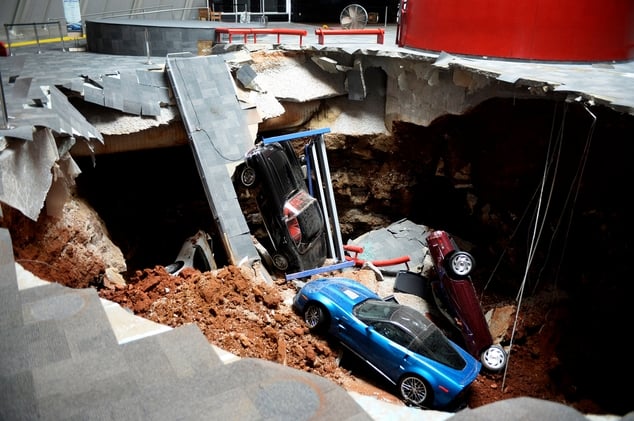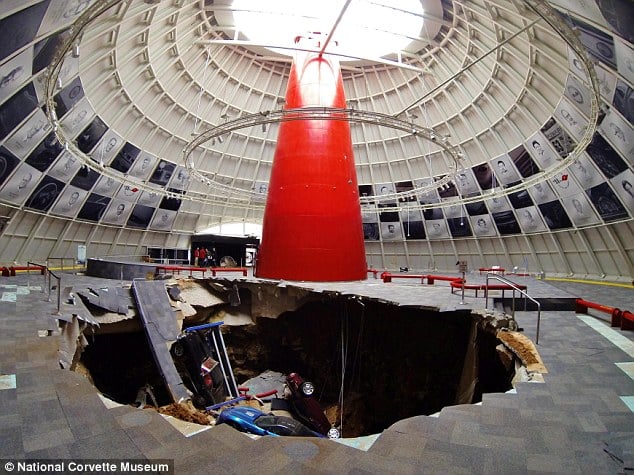Art & Exhibitions
Corvette Museum Embraces Massive Sinkhole


Sarah Cascone

The National Corvette Museum in Bowling Green, Kentucky, has made the unconventional decision to preserve part of a giant sinkhole that opened up in the floor of its iconic Skydome showroom in February, swallowing up eight cars and nearly taking the whole place down with it, reports the New York Times. While the chasm was originally 60 feet deep, museum plans call for maintaining a 25 by 45 foot opening that would offer views into a 30-foot-deep cave below, with some of the crushed cars displayed to recreate the incident.
If you didn’t know that the US even had a National Corvette Museum, you probably aren’t alone in that. This sinkhole business, however, has considerably raised the institution’s profile, as national headlines are wont to do. The museum is making the best of a bad situation, capitalizing on its new-found fame and re-branding a catastrophe as an attraction.

The sinkhole in the Skydome showroom at the National Corvette Museum.
Photo: courtesy National Corvette Museum in Bowling Green, Kentucky.
So far, it seems like a good idea, as museum visits and revenue have respectively risen 59 percent and 65 percent, according to chief financial officer Christy Thomas.
“If the interest in the exhibit wanes, or if down the road we decided that we don’t want the hole any longer, there is always an option to put the room back how it was,” Thomas told NBC News.
Some museum officials worried that the sinkhole was distraction from the museum’s focus on celebrating Corvettes. “On the one hand it’s been really good for business, and the publicity it has gotten you can’t buy,” Katie Frassinelli, the museum’s marketing and communications manager told the Times. “But on the other hand, at some point the novelty of it will wear off, and we don’t want to be known as Sinkhole Museum forever.”
Contemporary art aficionados will, of course, recognize the sinkhole as a massive, naturally occurring homage to Urs Fischer‘s giant-hole-in-the-ground installation, You (2007).